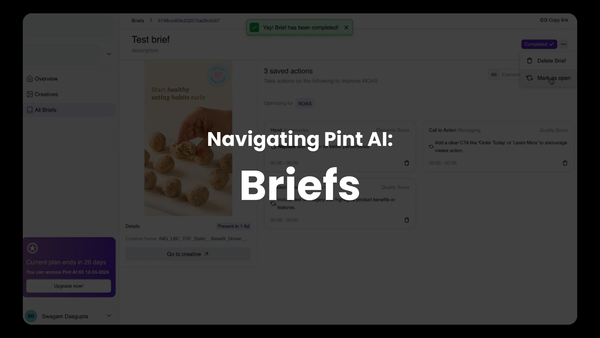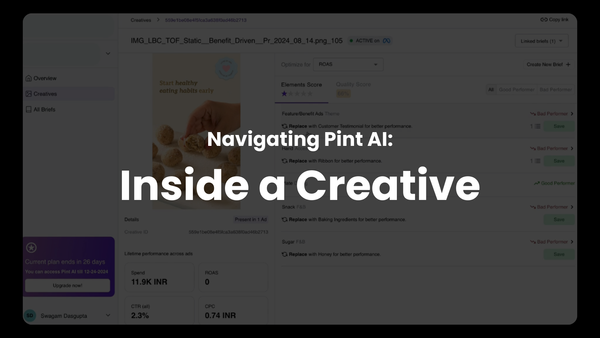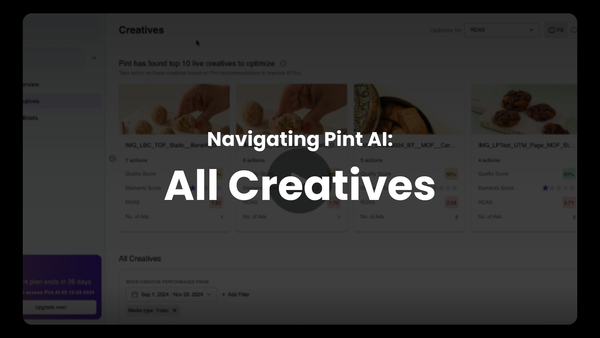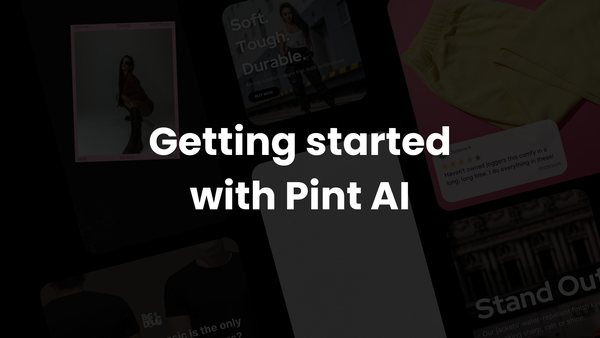Combatting Creative Fatigue in Digital Ads
Creative fatigue is the nightmare of every marketer; it's the point at which you know your ad is no longer effective. And this happens almost weekly. So how can you combat creative fatigue?
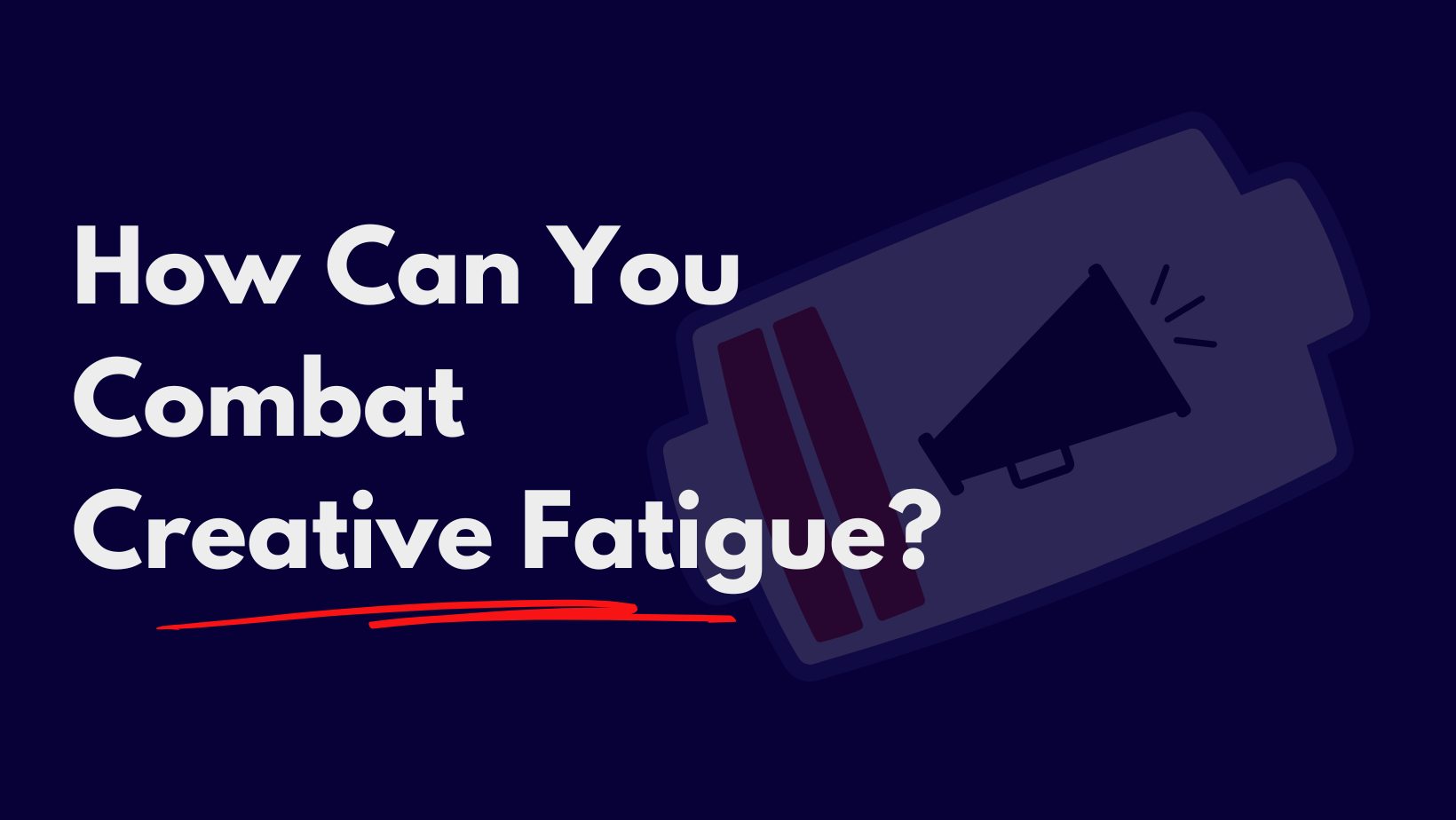
It's no secret that one of the most significant obstacles marketers face is creative fatigue; almost every ad starts losing its hold over the audience, and over time, negatively impacts the bottom line.
As ads lose their impact, engagement drops, and costs per conversion rise, making it crucial for marketers to understand, identify, and combat creative fatigue. So how can you deal with it? Let's dive in.
What is Creative Fatigue?
Creative fatigue refers to the decline in performance of an ad due to repeated exposure. When the same creative is shown to the same audience multiple times, it can lead to ad blindness, where viewers start to ignore the ad, or worse, develop negative associations with the brand.
This can result in lower click-through rates (CTR), decreased conversion rates, and ultimately a reduced ROAS.
Causes of Creative Fatigue
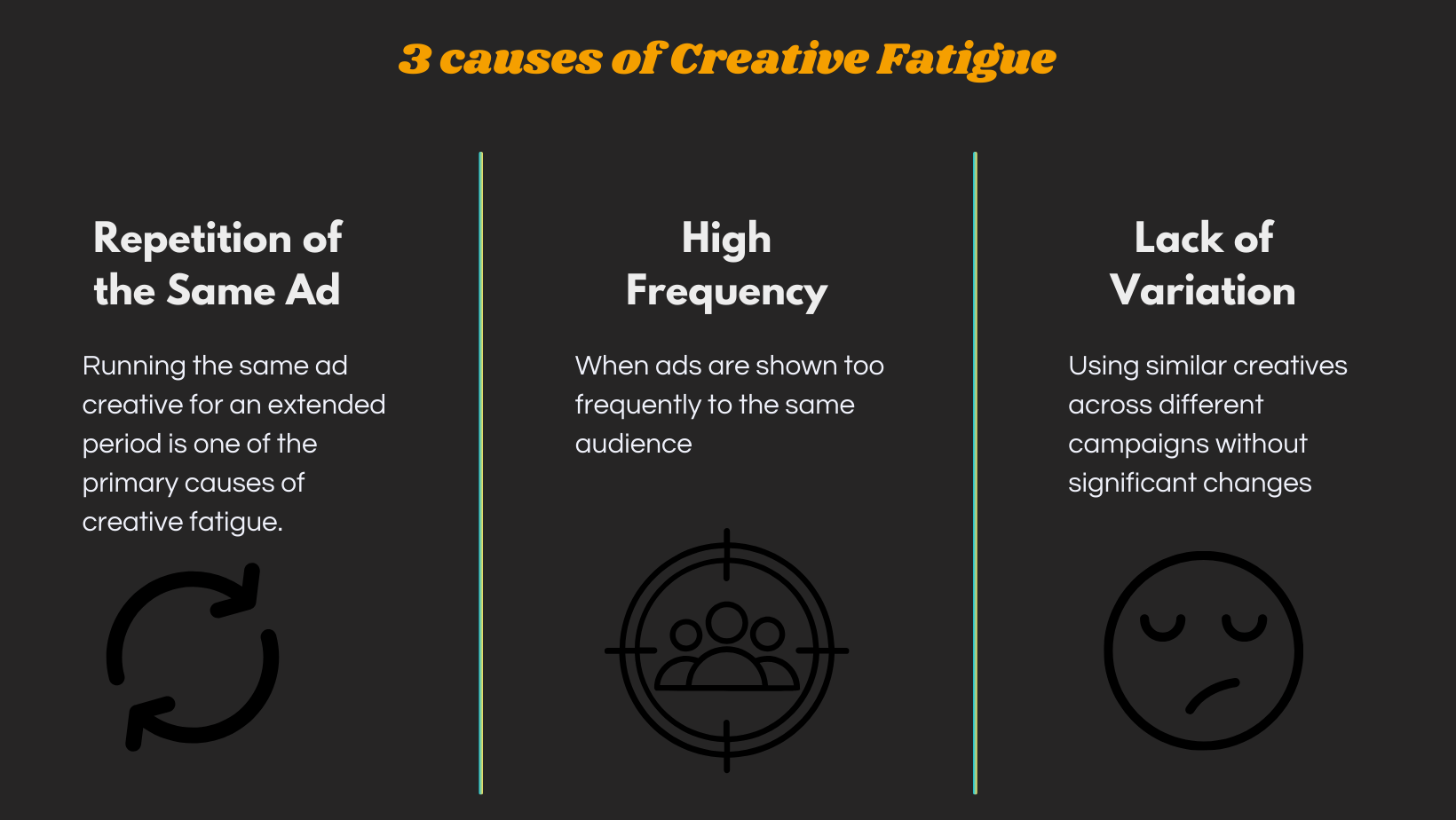
- Repetition of the Same Ad:
Running the same ad creative for an extended period is one of the primary causes of creative fatigue. Audiences can quickly become bored with seeing the same visuals and messages repeatedly. While there have been cases where certain ads — called evergreen ads — give returns over a long period of time, this is usually quite rare. - High Frequency:
When ads are shown too frequently to the same audience, it increases the chances of creative fatigue. This overexposure can lead to ad blindness or even irritation among viewers. - Lack of Variation:
Using similar creatives across different campaigns without significant changes can also contribute to fatigue. Audiences crave novelty and can easily get tired of seeing the same style of ads.
Signs of Creative Fatigue
- Declining Engagement Metrics:
A noticeable drop in metrics such as CTR, conversion rates, and engagement rates is a clear sign of creative fatigue. - Increased Cost per Acquisition (CPA):
As the effectiveness of an ad declines, the cost to acquire each customer rises, indicating that the creative is no longer resonating with the audience. - Audience Feedback:
Negative feedback, such as comments on social media or ad platforms, can signal that users are tired of seeing the same creative.
Real-Life Examples of Creative Fatigue and Solutions
Movistar / Telefónica Argentina:
Movistar faced creative fatigue in their ad campaigns, leading to a decline in performance. They partnered with Media.Monks and used AI-driven insights to introduce fresh creative elements. By leveraging tools like Monks.Flow and collaborating with Meta, they identified successful creative variations and optimized their ad sets. This approach led to a 9% increase in leads and a 9% reduction in cost per lead within four weeks.
Noom:
Noom, a digital health company, experienced creative fatigue as they scaled their ad spend on Facebook. To address this, they teamed up with TubeScience, which conducted R&D on Noom's personas and developed new video ad concepts. The comprehensive strategy included casting, shooting, and editing, allowing Noom to diversify their creatives and effectively scale their marketing efforts. This resulted in a 363% increase in year-over-year marketing budget and a 313% increase in subscribers.
Epsilon's Client Success Stories:
Epsilon helped various clients tackle creative fatigue by employing data-driven insights and creative solutions. For instance, they worked with a major retail brand to refresh their ad creatives continually based on customer behavior data. By testing new creative variations and incorporating feedback loops, Epsilon maintained high engagement levels and improved overall ad performance.
Strategies to Combat Creative Fatigue
- Regularly Update Creatives:
To prevent creative fatigue, it's essential to refresh your ad visuals and copy regularly. Introducing new elements and variations keeps your ads interesting and engaging for your audience. - A/B Testing:
Continuously test different ad variations to determine which elements perform best. A/B testing helps identify high-performing creatives and allows you to rotate them to maintain engagement. - Dynamic Creative Optimization (DCO):
Use DCO tools to automatically generate and test multiple creative variations. DCO personalizes ads based on user data and performance metrics, ensuring that your creatives remain relevant and engaging. - Frequency Capping:
Limit the number of times an individual user sees the same ad to prevent overexposure. Frequency capping helps balance the reach and frequency of your ads, reducing the risk of creative fatigue. - Audience Segmentation:
Tailor your creatives to different audience segments to ensure relevance. By understanding the preferences and behaviors of various segments, you can create personalized ads that resonate better and reduce fatigue. - Leverage Creative Analytics:
Tools like Pint AI provide detailed analysis of creative elements and their impact on conversions. Using these insights, you can identify which elements drive the most engagement and optimize your creatives accordingly.
Advanced Techniques for Combatting Creative Fatigue
- AI and Machine Learning:
Leveraging AI and machine learning can help predict which creatives will perform best with your audience. AI tools can analyze large datasets to identify patterns and recommend new creative variations, ensuring that your ads remain fresh and effective. - User-Generated Content:
Incorporating user-generated content (UGC) into your ad campaigns can provide a fresh perspective and increase authenticity. UGC is often more relatable and can help combat creative fatigue by introducing new voices and visuals. - Storytelling and Episodic Content:
Creating a series of ads that tell a story over time can keep your audience engaged and looking forward to the next installment. Episodic content builds anticipation and reduces the risk of fatigue by providing a continuous narrative. - Interactive and Immersive Ads:
Interactive ads, such as quizzes, polls, or augmented reality experiences, can engage users in a more meaningful way. These immersive formats offer a novel experience that can help combat creative fatigue and drive higher engagement.
Further Insights and Case Studies
- Heineken:
Heineken faced creative fatigue with their digital ads, which led to declining engagement rates. To combat this, they introduced a series of interactive ads that encouraged user participation. These ads included interactive games and polls related to their products. This approach not only refreshed their creative strategy but also increased user engagement and brand loyalty. As a result, Heineken saw a significant boost in their digital ad performance and a notable increase in their ROAS. - Coca-Cola:
Coca-Cola regularly faces the challenge of creative fatigue due to their extensive advertising campaigns. To address this, they implemented a strategy of rotating multiple ad variations and incorporating seasonal themes. For example, during the holiday season, Coca-Cola ads featured festive themes and special promotions. This continuous refresh of creative content helped maintain audience interest and engagement throughout the year, leading to sustained high performance of their ad campaigns. - Nike:
Nike leverages user-generated content to combat creative fatigue. By encouraging customers to share their own experiences and stories using Nike products, the brand generates a wealth of fresh and authentic content. Nike then incorporates this UGC into their advertising campaigns, creating a more relatable and engaging experience for their audience. This strategy not only combats creative fatigue but also strengthens brand loyalty and community.
Implementing a Long-Term Strategy
To ensure that your ad campaigns remain effective over time, it's crucial to develop a long-term strategy for combating creative fatigue. Here are some steps to help you implement such a strategy:
- Set Clear Goals:
Define what you want to achieve with your ad campaigns, such as increasing brand awareness, driving website traffic, or boosting sales. Clear goals will help you measure the success of your efforts and make necessary adjustments. - Monitor Performance Metrics:
Regularly track key performance indicators (KPIs) such as CTR, conversion rates, CPA, and ROAS. Monitoring these metrics will help you identify signs of creative fatigue early and take proactive measures. - Create a Content Calendar:
Plan your ad creatives in advance by creating a content calendar. This will help you ensure a steady flow of fresh and engaging content, preventing the risk of creative fatigue. - Collaborate with Creative Teams:
Work closely with your creative teams to develop new concepts and ideas. Encourage brainstorming sessions and foster a culture of innovation to keep your ad creatives fresh and exciting. - Utilize Feedback Loops:
Establish mechanisms to gather feedback from your audience, such as surveys or social media interactions. Use this feedback to refine your ad creatives and ensure they resonate with your target audience. - Invest in Training and Development:
Keep your marketing and creative teams updated with the latest trends and techniques in digital advertising. Investing in training and development will help your team stay ahead of the curve and continually produce high-quality creatives.
Conclusion
Creative fatigue is a significant challenge in digital advertising, but it can be effectively managed with the right strategies. By regularly updating creatives, leveraging data-driven insights, and utilizing advanced tools like AI and DCO, marketers can keep their ad campaigns fresh and engaging.
Understanding the causes and signs of creative fatigue is the first step in addressing it, and real-life examples provide valuable insights into how successful companies have overcome this challenge.


